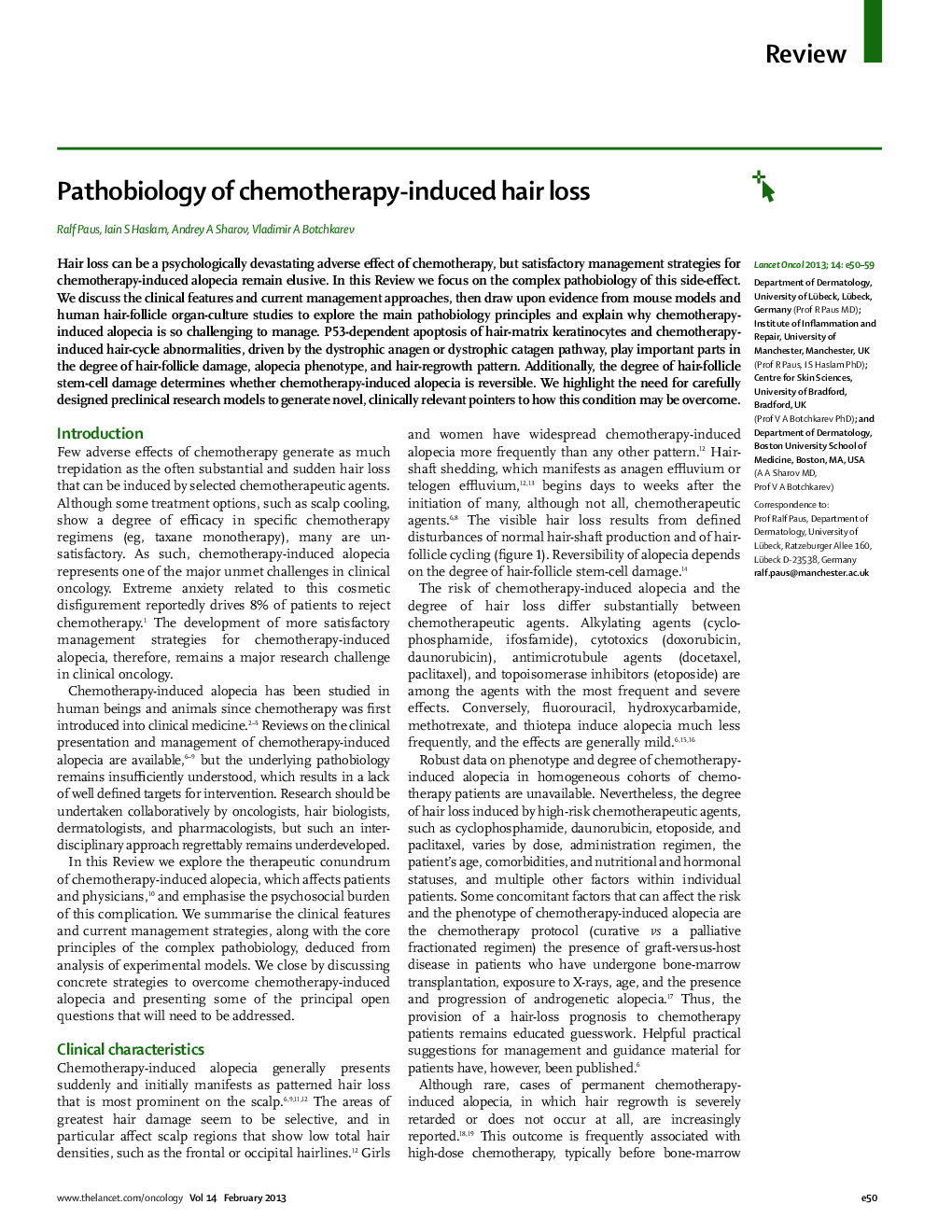| Article ID | Journal | Published Year | Pages | File Type |
|---|---|---|---|---|
| 3994045 | The Lancet Oncology | 2013 | 10 Pages |
SummaryHair loss can be a psychologically devastating adverse effect of chemotherapy, but satisfactory management strategies for chemotherapy-induced alopecia remain elusive. In this Review we focus on the complex pathobiology of this side-effect. We discuss the clinical features and current management approaches, then draw upon evidence from mouse models and human hair-follicle organ-culture studies to explore the main pathobiology principles and explain why chemotherapy-induced alopecia is so challenging to manage. P53-dependent apoptosis of hair-matrix keratinocytes and chemotherapy-induced hair-cycle abnormalities, driven by the dystrophic anagen or dystrophic catagen pathway, play important parts in the degree of hair-follicle damage, alopecia phenotype, and hair-regrowth pattern. Additionally, the degree of hair-follicle stem-cell damage determines whether chemotherapy-induced alopecia is reversible. We highlight the need for carefully designed preclinical research models to generate novel, clinically relevant pointers to how this condition may be overcome.
